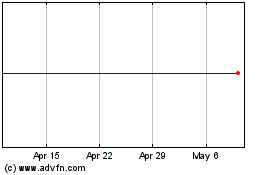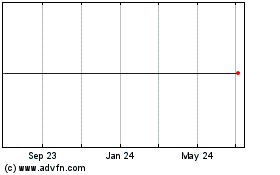For BHP, Dam Bursts Are Grim Issue
November 16 2015 - 3:02AM
Dow Jones News
(FROM THE WALL STREET JOURNAL 11/16/15)
By Andrew Peaple
When shareholders in BHP Billiton gather in Perth, Western
Australia, for the company's annual general meeting this week, a
faraway iron-ore mine in rural Brazil will be on their minds.
The breaches at two tailings dams near BHP's jointly owned
Samarco operation in the Minas Gerais state on Nov. 5 unleashed a
flood of mud across the surrounding area, leaving nine people
confirmed dead and 19 missing. The cleanup bill could reach at
least $1 billion, according to Deutsche Bank estimates.
BHP's Australia-listed shares have fallen to their lowest level
since the financial crisis and close to 10-year lows in the
aftermath of the dam breaches, as investors fret about the cost to
the business-both reputational and financial-and whether the
world's largest mining company by market value can continue to pay
its current dividend. BHP's London-listed shares have also
suffered.
Against such a backdrop, Thursday's shareholder meeting is
likely to be one of the trickiest in years for BHP's longtime
chairman, Jac Nasser, and its chief executive, Andrew
Mackenzie.
"I hope they cut the dividend," said an Australia-based fund
manager, who holds shares in BHP and expects it to be a key topic
at the meeting. "The [dividend] policy is creating havoc with the
management of the company."
For Mr. Mackenzie, holding to BHP's dividend is a reputational
issue. The company's policy is to maintain or lift investor payouts
every half-year, even in the face of the downturn in world
commodity markets in the past few years. For cash-hungry investors
such as big pension funds, that sort of commitment is a key
attraction of resources stocks such as BHP.
The mining company's boss has strengthened his rhetoric to
soothe such investors, even though earnings for its June-ended
fiscal year slumped nearly 90%. "Over my dead body sounds a little
strong, but it is almost right," Mr. Mackenzie said in discussing
the annual results in August, referring to the possibility of a
dividend cut.
Analysts are less sure he can hold the line. BHP aims to
generate enough cash flow each year not only to cover its costs,
but also to fund new investment and its shareholder payout, without
going too much further into debt.
Meeting those different objectives is becoming harder. Even
before the Samarco disaster, Standard & Poor's Ratings Services
cautioned that the mining company's payout pledge could weaken its
financial position given a broader slump in commodity prices. The
price of iron ore, which contributed 80% of BHP's earnings last
year, has fallen below $50 a ton this year, down by one-third from
a year earlier.
In response to a request for comment, BHP pointed to a recent
speech by Mr. Nasser in which he said the company's balance-sheet
strength had provided it with the confidence to increase its
dividend this year.
BHP's dividend already looks out of line with its long-term
performance. The company on average paid out around 20% of its
earnings before interest, tax, depreciation and amortization in the
years from 1970 to 2012, Goldman Sachs has calculated. BHP would
have to halve its current payout to achieve that sort of
"sustainable" level now, the bank reckons.
It remains unclear how much harder the catastrophic dam bursts
will make Mr. Mackenzie's task. While offering some support on the
ground, BHP has been careful to state that responsibility for the
accident lies with Samarco, a limited liability company it owns in
equal parts with Vale SA, the Brazilian mining giant.
But some local lawyers have suggested the co-owners will be
targeted if their joint venture can't cover the legal and cleanup
costs. BHP should make a provision of roughly $400 million to cover
potential charges over the next two years, Credit Suisse analysts
say.
To date, BHP has provided no explanation of what caused the
Samarco disaster, amid growing criticism of the company in Brazil.
The company's investors will be looking for a clearer accounting
come Thursday.
---
Rhiannon Hoyle contributed to this article.
---
The Week Ahead looks at coming corporate events
Subscribe to WSJ: http://online.wsj.com?mod=djnwires
(END) Dow Jones Newswires
November 16, 2015 02:47 ET (07:47 GMT)
Copyright (c) 2015 Dow Jones & Company, Inc.
BHP (NYSE:BBL)
Historical Stock Chart
From Mar 2024 to Apr 2024

BHP (NYSE:BBL)
Historical Stock Chart
From Apr 2023 to Apr 2024
